Introduction
Intel is lifitng the embargo on at least the technical details of their new 14th-gen CPU codenamed Raptor Lake Refresh and as the name implies, this is based-off last year’s CPU generation, Raptor Lake. With Raptor Lake spawning a KS version last-gen, Intel was able to utilize that more mature process to create their 14th-gen line-up of Intel Core CPUs for desktop. To further create interest, Intel has added some features to the CPU with motherboard partners reliant on a couple of technology updates in hopes of driving interest to this CPU generation.
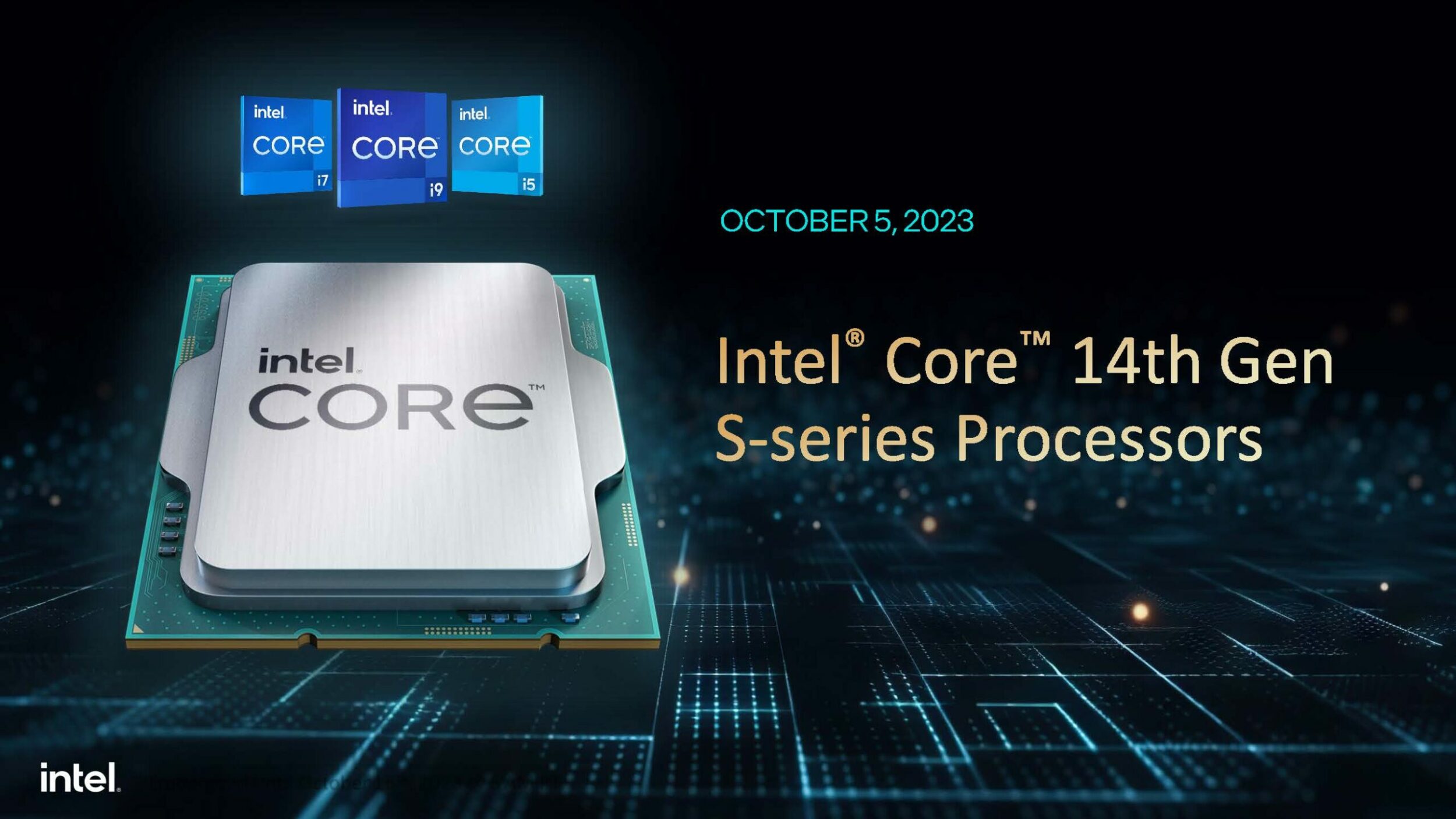
In this article we’ll share some techncial details regarding this release. Formal reviews will be up following this article and our review will follow. For now, we’re allowed to talk about the details of the CPU barring in-house benchmarks, of course. Intel has sent us their own benchmarks they’ve performed which we’ll brisked thru by the end of this article.
Quick disclaimer: This is an independent article and Intel has not sent media kits for this review. Our CPU samples are from motherboard vendors we work with directly.
Its an interesting time for Intel as this is a generation where they’re really not looking like themselves yet still being Intel at the same time. I say that because this is the first time we’ve seen Intel go past 2 generations on a single socket barring the LGA775 socket and to some extent LGA2011 yet it isn’t unlike Intel to go for a refresh release all the while this is happening with Intel also ending the Core “i” branding and releasing a new architecture with Meteor Lake.
Meteor Lake is an interesting topic in itself and Intel is pouring out the marketing for that from last month’s announcement. You can check out our article about Meteor Lake for more information.
Intel has sent media kits containing an Intel Core i9-14900K and an Intel Core i5-14600K to select publications. Motherboard vendors also have their own CPU samples with them. It is also confirmed that vendors in Southeast Asia already receive their stocks for launch day namely Indonesia and Thailand. That said, expect to see reviews for the Core i9-14900K, Core i5-14600K and I put this last, the i7-14700K.
14th-gen Intel Core Launch Line-Up
The Core i7-14700K is perhaps the most interesting in the launch stack as you will see below:
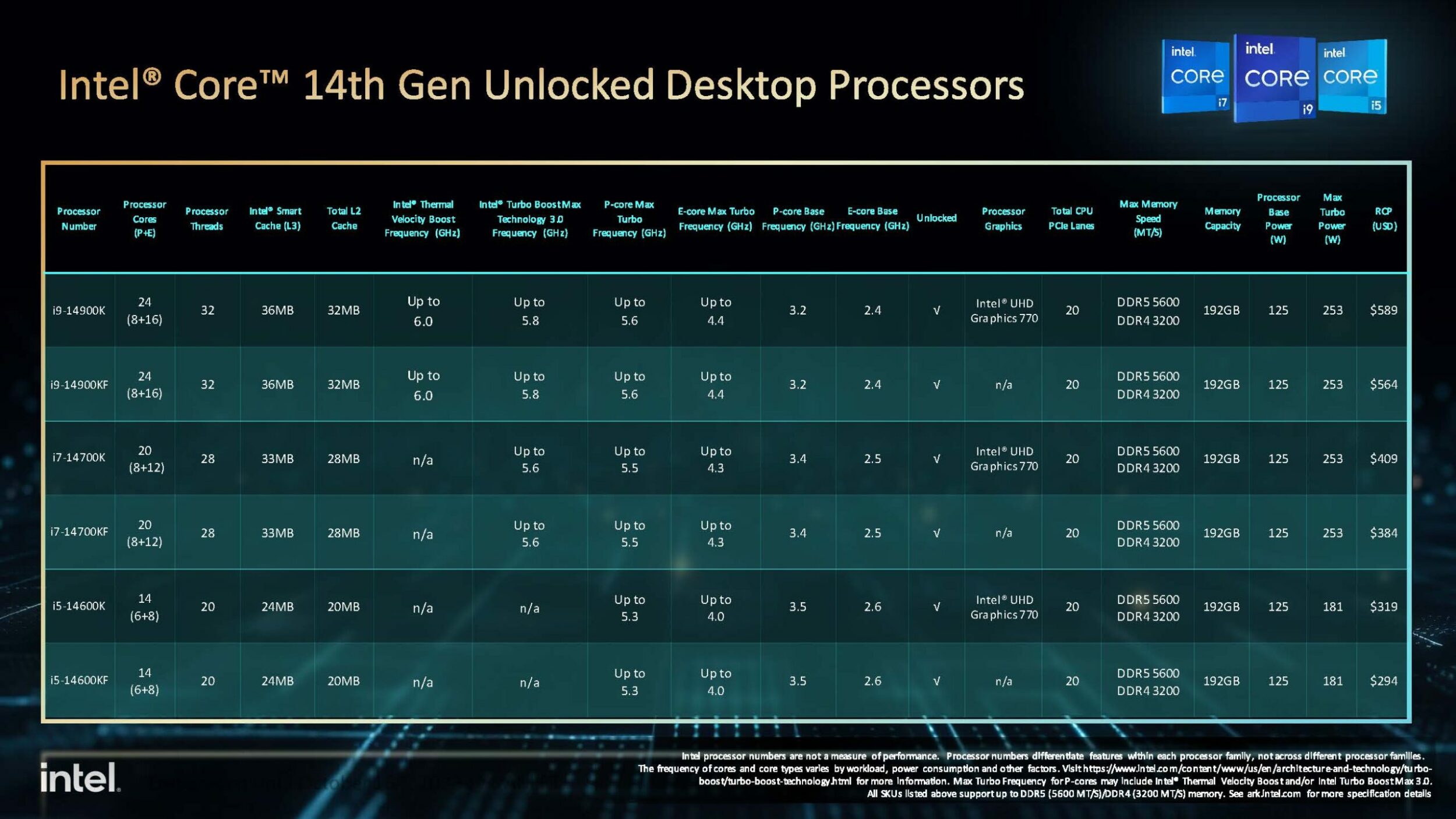
The core structure remains consistent with previous generations, boasting a combination of “Raptor Cove” Performance cores and “Gracemont” Efficiency cores. The flagship Core i9-14900K maxes out this core structure, while the Core i7-14700K experiences a core-count increase compared to its predecessors. Additionally, Intel has reintroduced the Thermal Velocity Boost (TVB) technology exclusively for its 14th Gen Core i9, allowing enhanced performance under suitable cooling conditions.
- Core i9-14900K:
- 8 Performance cores + 16 Efficiency cores
- 36 MB L3 cache
- Thermal Velocity Boost up to 6.00 GHz
- Priced at $589
- Core i9-14900KF:
- Same as K model, lacks integrated graphics
- Priced at $564
- Core i7-14700K:
- 8 Performance cores + 12 Efficiency cores*
- 33 MB L3 cache
- Max boost frequency for P-cores: 5.60 GHz
- E-core boost frequency: 4.40 GHz
- Priced at $409
- Core i7-14700KF:
- Same as K model, lacks integrated graphics
- Priced at $384
- Core i5-14600K:
- 6 Performance cores + 8 Efficiency cores
- 24 MB L3 cache
- P-core boost frequency: 5.30 GHz
- E-core boost frequency: 4.00 GHz
- Priced at $319
- Core i5-14600KF:
- Same as K model, lacks integrated graphics
- Priced at $294
Intel has retained the pricing from its 13th Gen counterparts. The differentiation between the -K and -KF models lies in the absence of integrated graphics in the latter. The strategic enhancement of the i7-14700K is seen as a counter to AMD’s 12-core/24-thread Ryzen chips, particularly the Ryzen 9 7900X3D, with Intel’s offering boasting 28 threads.
As mentioned the Core i7-14700K is perhaps the most interesting of the bunch and is curiously omitted in Intel’s review kit. While uncharacteristic, should the increase in core count add enough performance to really push the 14th-gen Core i7 to a position where it destabilizes the competition, then it should’ve been the crown of the set. Sporting 20 total cores, the Core i7-14700K and its variants *feature 8 P-cores and 12 E-cores, a step-up from the 13700K’s 8+8 P/E configuration.
It will be a few more months where the true value king will get released if Intel decides to do something for the Core i5-14400. The Core i5-12400F has been a value darling for mainstream builds and managed to help transitioning builders go to DDR5. It has its competition in the form of AMD’s Ryzen 5000 offerings who may not be on the newest platform but offer excellent value.
Going back to what we have at hand, prices are subject to local pricing and Intel’s list pricing are but mere guidelines as the Intel Core i9-13900K with a launch price of $589 breached past PHP44,000 (exchange rate that tieme was around 1USD = 58.99PHP), almost $800 in that day’s exchange.
Raptor Lake Refresh Updates and Features
Intel’s Raptor Lake Refresh feature exactly the same silicon as Raptor Lakee from the 13th-generation lineup. Still, Intel does bump some of the clocks when available but ultimately, most of the changes in Raptor Lake Refresh are in some its features. Independent reviews of Raptor Lake Refresh will confirm if there are power savings from last-generation but other than that, Intel does not make any grand promises for this generation.
As indicated in the slides, all three main SKUs have undergone a 100-200 MHz bump to their maximum boost frequencies. The i9-14900K/KF features a 6Ghz TVB which when used with the best cooling possible can give a guaranteed 6Ghz on at least a single core. The good thing here is that these CPUs will be compatible with any LGA1700 motherboards if and when a BIOS update is available to support the new CPUs.
With this release we’re getting a new feature from Intel called Intel Application Optimization (APO). APO is game-specific technology which improves performance based on the game’s profile, dynamically tuning the CPU. So far only Metro Exodus and R6 Siege are support baed on Intel’s slide.
If APO sounds very AI-ish then its more apparent in XTU’s new feature, AI Assist, which like all versions before it has a tuning option to give your system a stress test before prescribing a suitable OC. With AI AI Assist, the app runs AI-based automated performance testing to customize performance improvements to your system.
Intel’s Own Benchmarks
Here are Intel’s in-house benchmarks for your reference. Intel’s NDA states that I cannot publish any reviews so these are purely their own and you are free to come-up with your own conclusion.
First Impressions
To be 100% honest, I actually have no feelings towards 14th-gen Intel Core CPUs and its not because its an uninteresting launch but as someone residing in the Philippines where WIFI7 is non-existent, its new features doesn’t add value to me except for the performance part and as someone who has been building up parts for this launch, I have been ready for this day for months now.
Am I impressed with Intel’s 14th-gen CPU? Absolutely not but as the orinal criticisms have already said, if you’re sitting on the i5 or the i9 then this will be a pure sidegrade from 13th-gen and only the i7-14700K looks to be getting some positive headlines come launch hour.
But that being said, anyone coming off Alder Lake who have paid the extortionate lauch prices for these CPUs may find that Raptor Lake Refresh is actually more relaxed in terms of pricing. As mentioned, Raptor Lake 13th-gen debuted to ridiculous exchange rates and were still burned with forced bundles. With the abundance of Intel LGA1700 boards in the market, partners are gnawing at the bit to move stocks and Intel has to make them happy somehow.
That said, there lies the crux of this product: its a victim of the current tech trend of the same product releasing every year and you are not compelled to upgrade to Intel 14th-gen and that’s going to make it look like a bad product. Comparing it to Alder Lake or Ryzen 5000 or anything older, it looks to not be the case.
Regardless, formal reviews of Intel’s 14th-gen CPUs will be published soon. We’ll see you then!


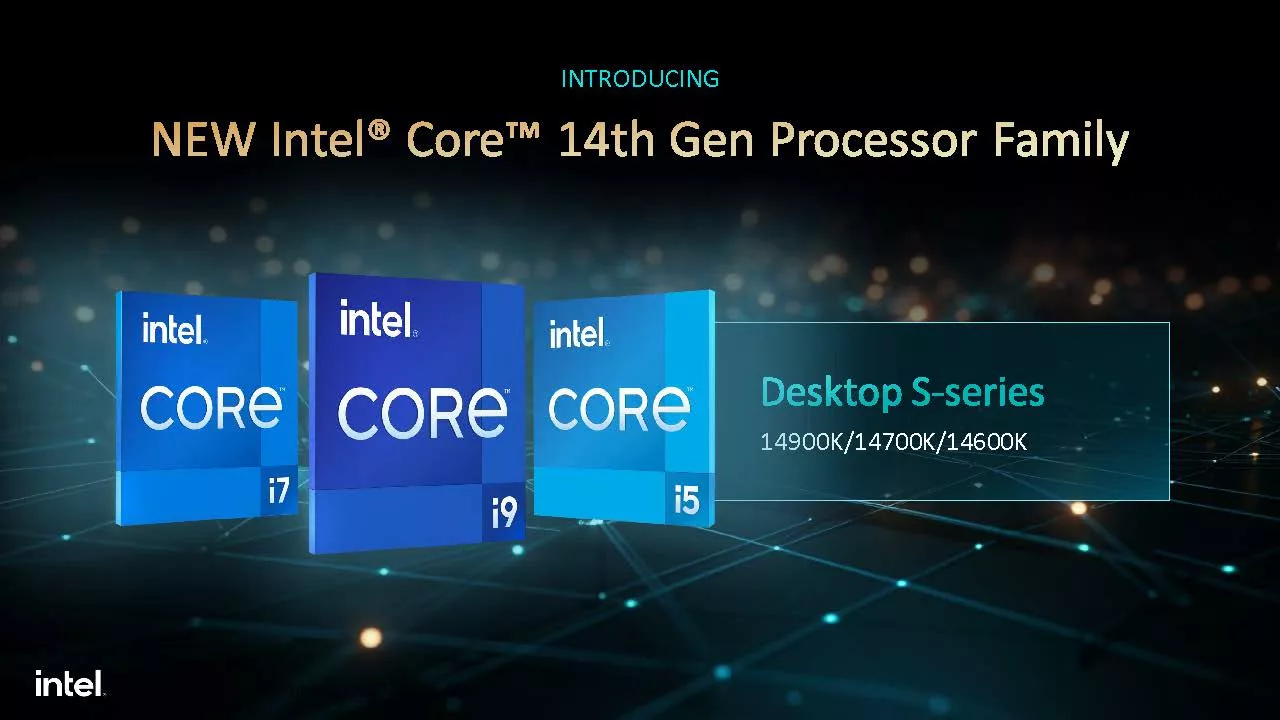
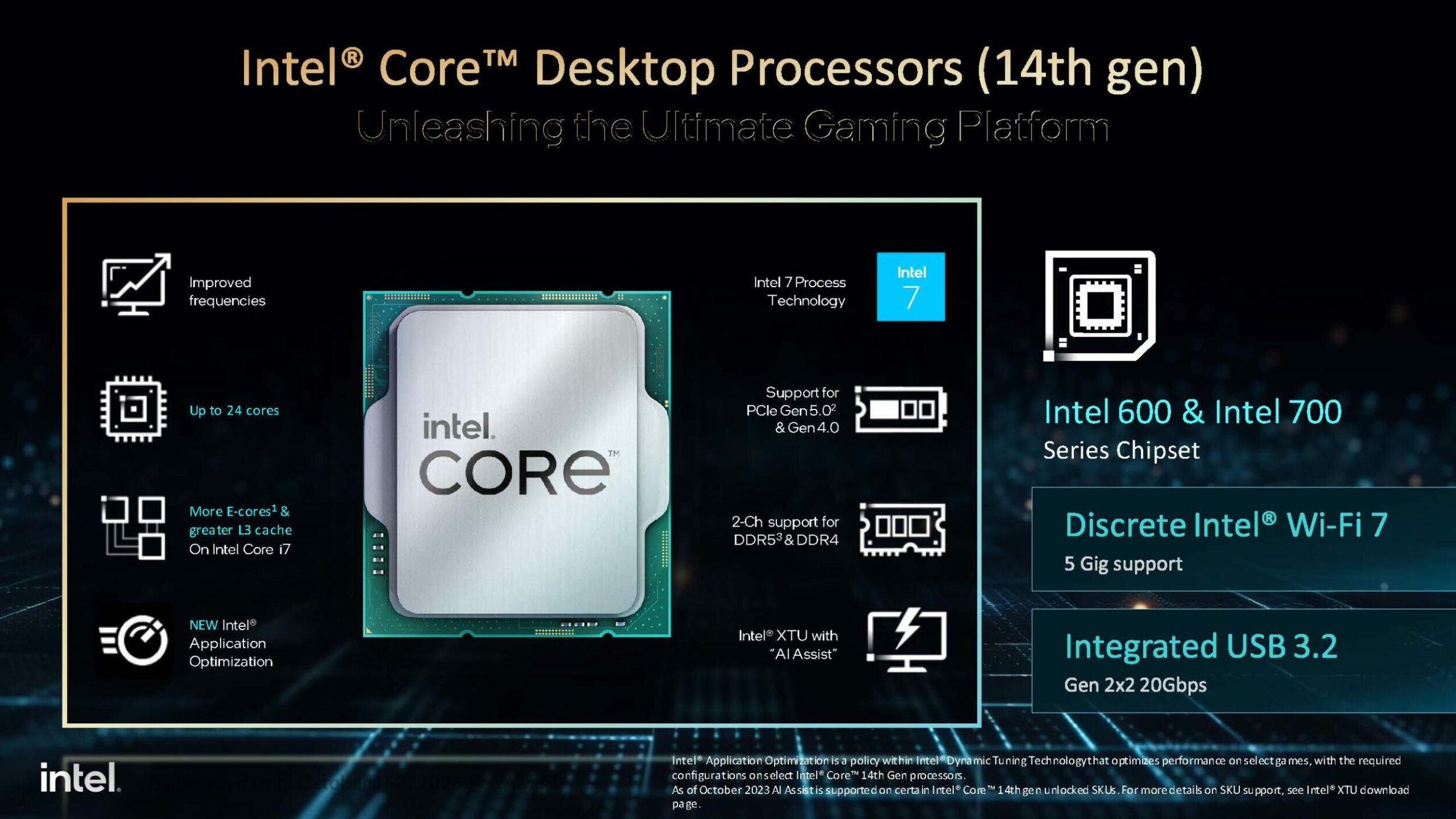
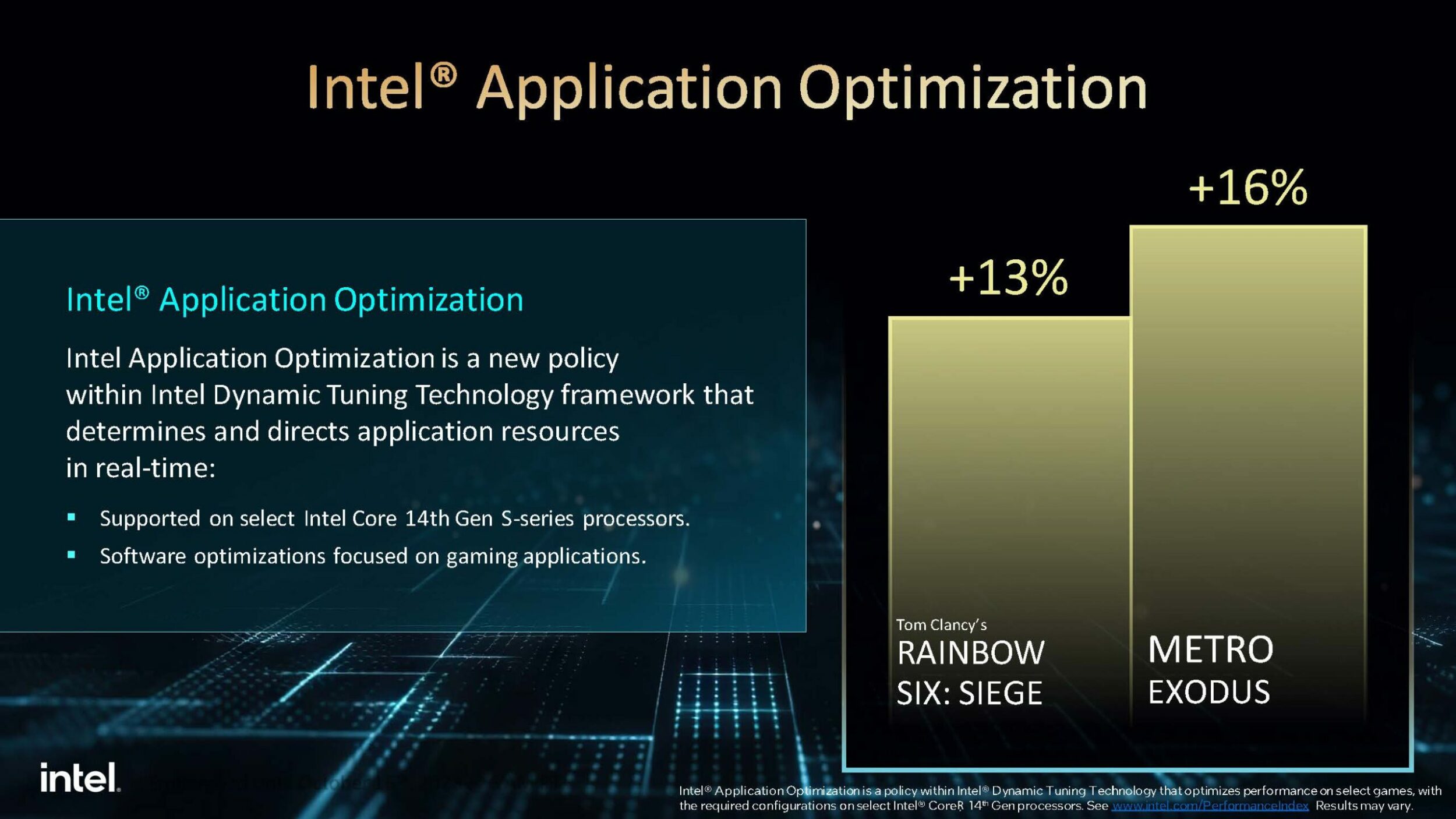
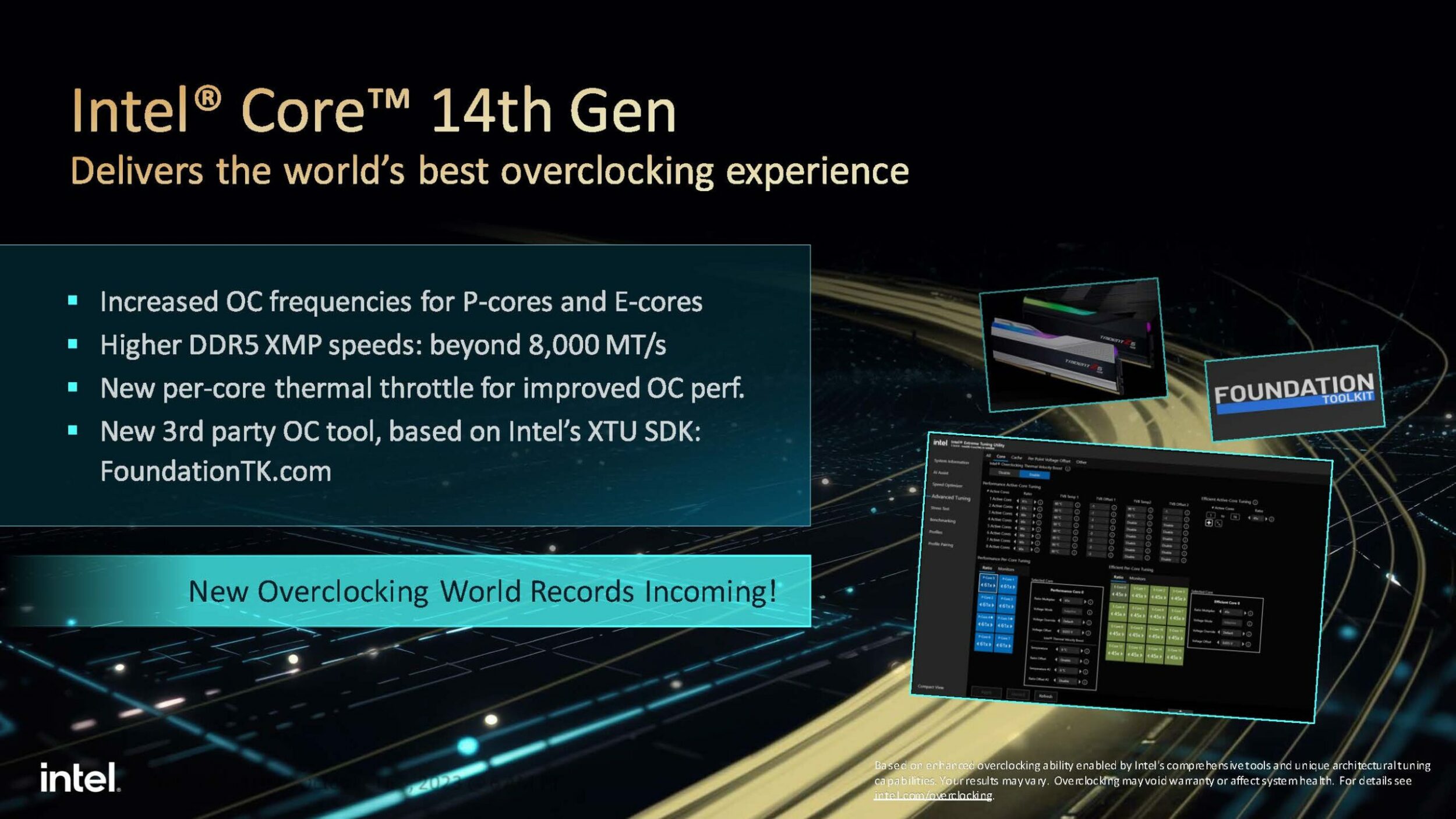
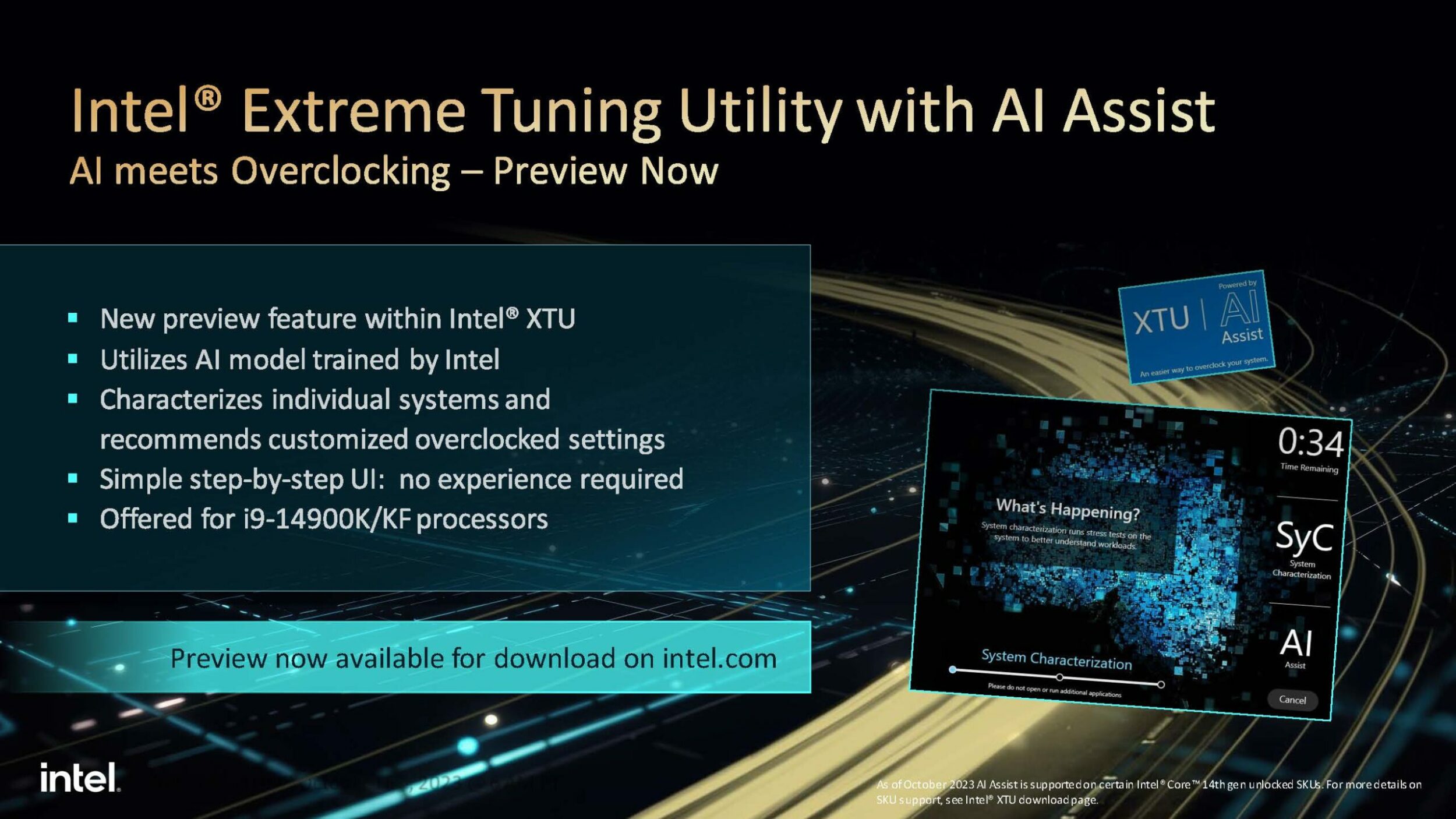
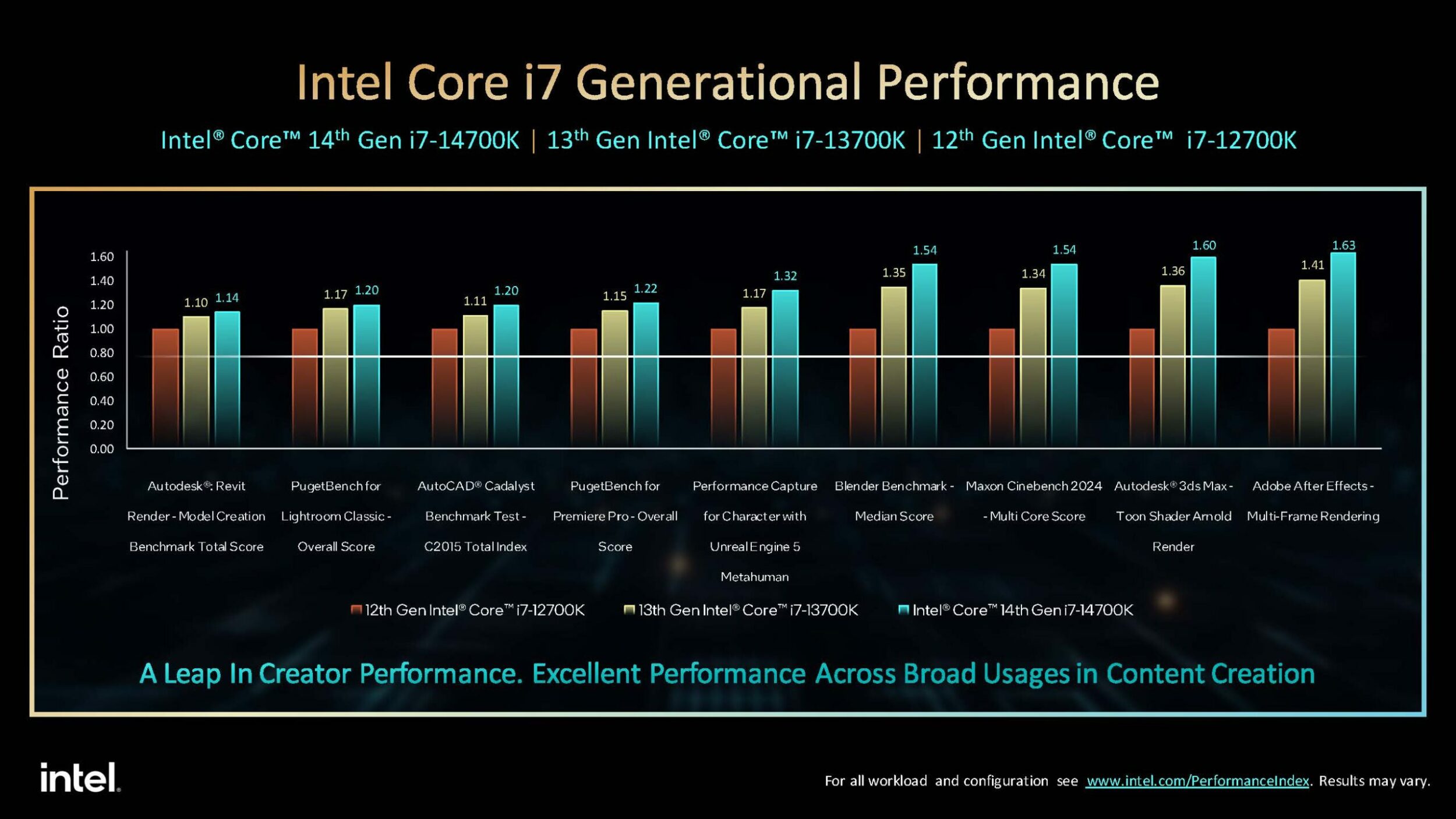
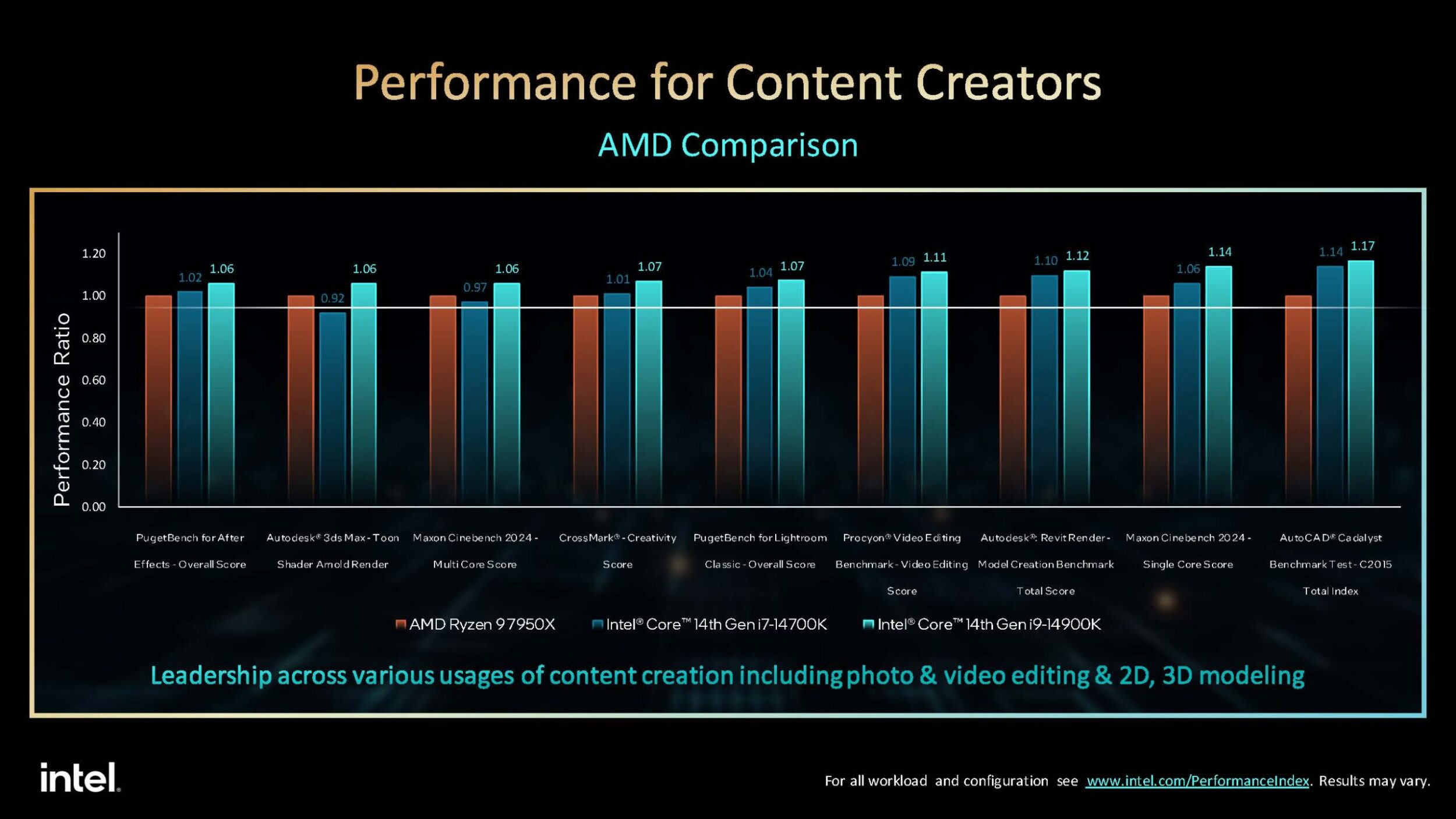
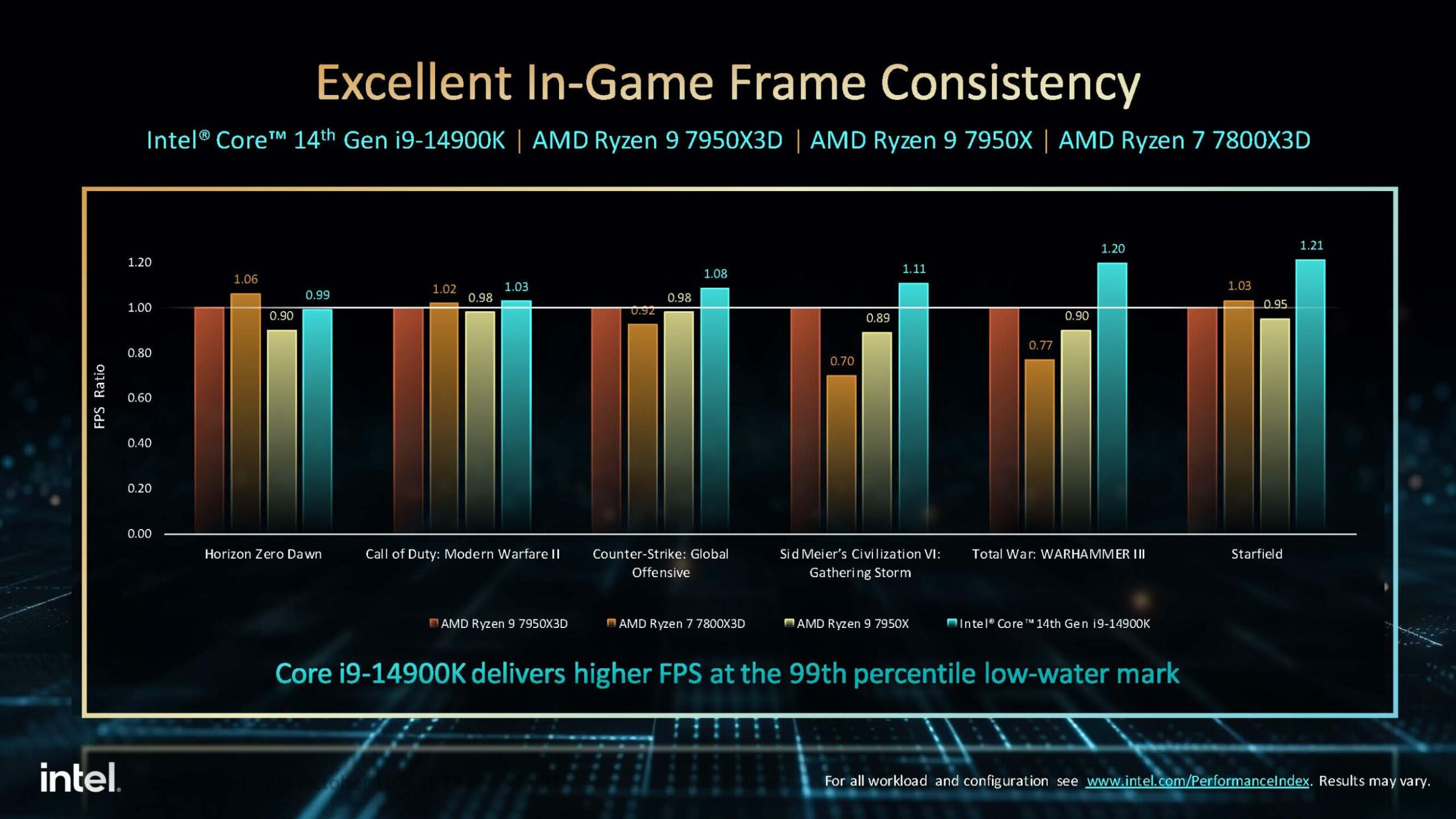
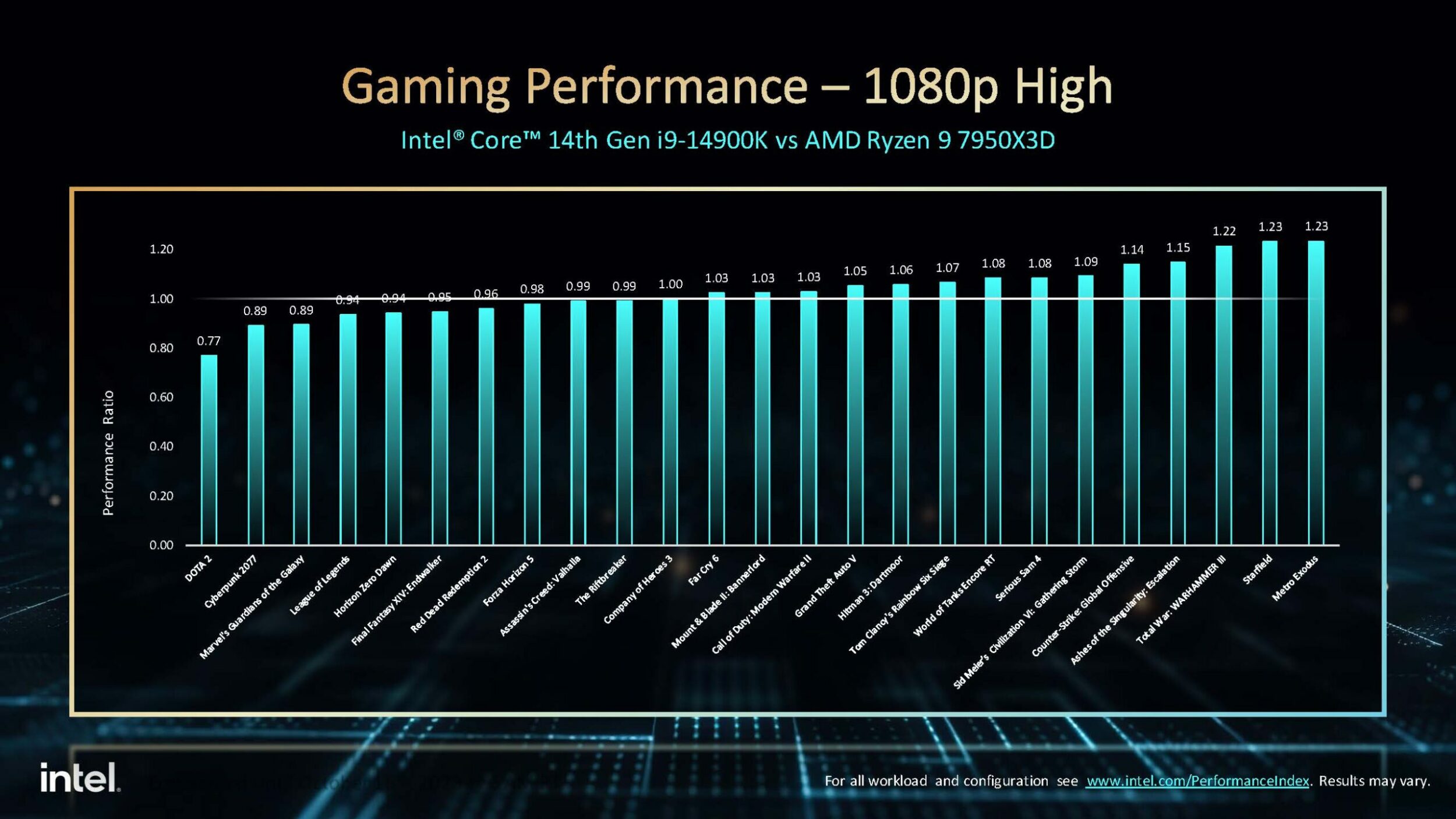
4 Comments
Mag chiplet design na rin si Intel?
they call it tiles and in-use na sa Meteor Lake coming December 2023. Most likely 2024 is Arrow Lake-S na for desktop LGA1851, also using tiles tapos Core Ultra na branding
Back2Gaming “glued” din kaya mga tiles? Hahahaha
on paper mas gusto ko ung fabric ni intel pero sa kapal ng stack n meteor lake feel ko ung mababang clock speed kalaban dito